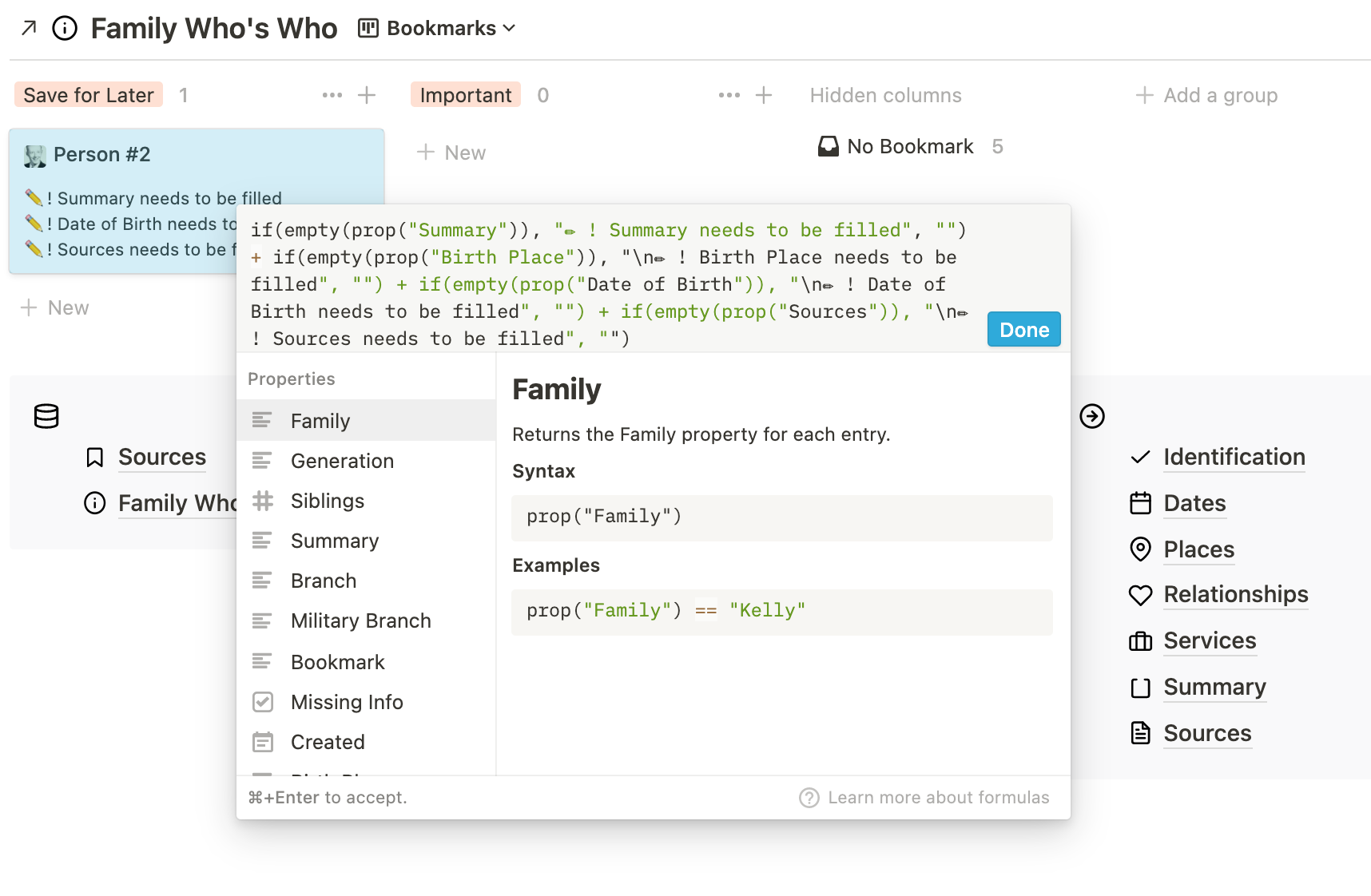


Without a database, these types of filters and sorts aren’t possible in Notion – which means you may eventually end up with long lists of pages that can only be sorted by dragging-and-dropping.

Seen Recently – a simple Checkbox property.

Genre – a Multi-Select property, which allows one or more tags to be applied to each record.Properties hold structured information within a database, and typically they’re set on a per-row basis. You can see these at the top of the Hot Fuzz page above, or as columns in the Table view. These pages can hold any type of content you want – text, images, and even other Notion databases.ĭatabases also have properties. However, I can open up any one of them and get a Notion page that works just like any other:
NOTION FORMULA TUTORIAL MOVIE
In this example, each movie is a row in the database. The Table layout in Notion displays a database’s rows as they’re actually stored in the database (since Notion uses a table-style database structure with rows and columns). And in Notion, those rows are actually Notion pages themselves. Notion Databases at a Glanceĭatabases store rows (sometimes known as records). There are later sections in this guide for both (click to jump to them):įor now, it’s just useful to know the ways you can create new databases. If you create a database block using a layout command, Notion will give you the option to either create a Linked Database (which links to an existing source database), or to create a new database. You can also use the / command to create a database with the specific layout you want. In the video version of this lesson, we’ll be using everything we learn to create a useful example database – a simple task manager, which you could include in the personal dashboard that we’ve been building throughout the other lessons in this series. I encourage you to use the table of contents to jump around! Note: This guide is massive, and is intended to be a truly complete tutorial for Notion databases. In this Notion Fundamentals lesson, I’ll guide you through all the basics of creating and using databases.
NOTION FORMULA TUTORIAL HOW TO
Once you understand how to work with databases, you’ll unlock a whole new level of capability inside of Notion. Custom dashboards for sales and performance data.Within your Notion workspace, you can create databases that can store almost any kind of data, including text, numbers, file attachments, and more. The most powerful and flexible tool in Notion is its database feature.


 0 kommentar(er)
0 kommentar(er)
